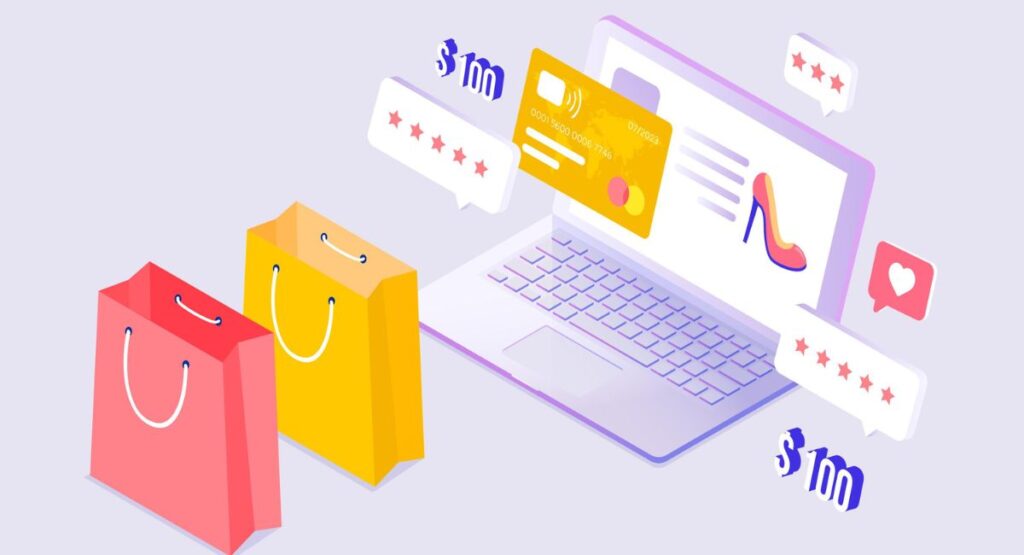Essential Tips for Successful Shopify Implementation

Table of Contents
Introduction
Shopify setup is now key for any business that wants to do well in the fast-changing e-commerce world. Shopify is a strong commerce platform. It helps you make and run a smooth and good-looking online store. It does not matter if you are just starting or if you have had your shop for some time.
Shopify gives you the tools and support you need to fit what your business asks for. You can use it for your store’s look and its use. Shopify helps businesses grow, bring in customers, and have people come back to buy again and again. When you finish this, you will get the help and knowledge you need to begin and run your own Shopify journey.
Understanding Shopify Implementation: An Overview
Launching a good Shopify implementation is not just about making a website. You need to plan this, choose the right tools, and set up things in the right way on this powerful commerce platform. Doing it well helps your online store work better, bring in more people, and increase sales.
The platform is flexible, so businesses can change their storefronts as needed. They can also add new features to make shopping easy and smooth. With Shopify, it is easy to grow your business and keep your marketing and operations on track. This commerce platform gives you what you need to move up and reach your goals.
What is Shopify and Why Choose It for Your Online Store?
Shopify is an easy-to-use e-commerce platform. It is made to help people sell both online and in person. Many small business owners and bigger Shopify merchants pick Shopify for its simple setup and the many things it can do. With Shopify, businesses can keep track of what they sell and see what customers do in one place. They can also make their commerce work better from one easy dashboard.
Why pick Shopify for your online store? For one, you can use it at any size—if your business is small or if it starts to grow. It is ready to help, no matter where your business goes. Also, Shopify comes with tools that make things easy, like an editor you can drag and drop, helpful AI tools to set up your store, and Shopify Payments. All of this helps you manage your store with less stress.
Shopify lets you sell in many places at once. You can build an online store, sell on social media, or use Shopify POS if you also have a real store. This means your business can reach more people, whether online or in a shop. For anyone who wants to create a great customer experience and plan for the future, Shopify is a smart choice.
Key Benefits of Shopify Implementation for U.S. Businesses
For companies in the United States, Shopify brings many good things. One big plus is how it improves the customer experience. The website is easy to use on any device. Shoppers can move around the site smoothly, check out fast, and shop right from their phones. These features help shoppers who want speed and ease when they shop.
Shopify also includes built-in tools like Shopify POS. This lets a business use the same system for its online and store sales. It helps keep track of items and gives a clear way to manage your brand in every place it sells.
The platform works for every size of business, from new e-commerce stores to big stores. There are easy-to-use website templates and useful analytics that help you know more about your store. You can use this data to help your business grow. Shopify also lets you take local payments, accept more than one kind of money, and ship to places all over the world. All of this helps U.S. shops go global and reach more people.
Essential Prerequisites for Shopify Implementation Success
Before you begin with Shopify, it is important to build a strong base. Start by planning your marketing strategy. This means you need to know your target audience, set clear goals, and work on branding that speaks to people. When you have a good strategy, it helps you make easier choices and get the most out of the platform features.
Also, make sure your technical needs are a good match for what Shopify can do. If you want to link up tools you already use or plan to move everything over to Shopify, be sure to get ready for changes in data, design, and daily work. Getting all of these things set up early will help you and your team have lasting success with your e-commerce business.
Choosing the Right Shopify Plan and Features
Choosing the right Shopify plan to fit your specific needs is important for success in e-commerce. First, look at the size of your business, how many sales you expect, and which features you need. Shopify has a range of plans. There is the Basic plan for new shops, and other options like Advanced and Shopify Plus for big companies.
- The Free Trial lets you try out tools before you pay any money.
- Make sure your plan works with the marketing and SEO tools you want.
- Check the transaction fees and how easy it will be to grow or change your store.
- Look over the analytics and reporting tools to be sure they fit your business goals.
If you plan to hire help, choose businesses or people who know the Shopify system well. In the end, picking a plan that gives you the most for your money and includes the features you need will help your e-commerce business grow.
Preparing Your Product Catalog and Content Assets
An organized product catalog and great content are key to your online store. Make sure your product descriptions fit your target audience. This helps more people find and enjoy your products. You can use bullet points to show off features and benefits.
You should also have high-quality content assets like product photos, videos, and banners that show what your retail business is about. Keep your images the same on every platform. This helps make your brand easy to know.
Set up your products in collections and categories that are easy to use. When you think about what shoppers need and put your content in the best way, you make a better e-commerce experience for everyone.
Cost Factors in Shopify Implementation
Managing costs in Shopify is important for every business. There are a few main things that impact what you spend. These include the platform subscription, software development, app fees, design, and changes you might want. If you need to send out products or manage stock, there can be extra costs for logistics and inventory, too.
It is a good idea to plan your budget well so you do not run into money problems as you add key features. Try to keep the costs low, but also make sure your shop can grow later. Look into Shopify implementation services with clear prices. This is helpful for those who are new to the platform.
Shopify Implementation Cost Breakdown
Understanding the Shopify implementation cost breakdown helps people and businesses use their money in the best way. The cost for Shopify can change a lot. Here is a simple breakdown to help you get started with your plan:
| Component | Approximate Cost |
|---|---|
| Shopify subscription | $5/month (Starter) to $2,000/month (Plus) |
| Theme or design services | Free themes to $1,000+ (custom designs) |
| App integrations | $0-$250/month |
| Developer costs | $20-$200/hour |
| Product photos and content | $0 (DIY) to $500+ |
Every business is different, and what you need might not be the same as what other people need. So, it can be good to talk with Shopify implementation partners or plan your budget in a careful way. This will help get the most out of your investment and your Shopify app.
How to Budget for Shopify Plus Implementation
Managing your Shopify Plus implementation starts with matching your budget to your business needs. You should plan for things like development, custom work, and talking with your stakeholders.
First, put focus on what gives you the most return. For example, custom checkout options can really make the customer experience better. Make sure to keep an eye on any regular costs, like app fees and extra support.
Try working with certified Shopify implementation partners for help. They have the experience to make the setup easy and save you money. This will help your Shopify Plus setup go well and give you better results.
Next, we’ll talk about why choosing skilled Shopify pros is so important for your business.
Selecting Certified Shopify Implementation Partners
Choosing the right partners for your Shopify online store can make a big difference in how well your business does. You should pick certified Shopify partners who know about user experience and what your specific needs are.
When you look at shortlisted vendors, check if they have experience in software development and if they know about the whole ecosystem. A strong partner will help keep things smooth for you. They will help with customization for your e-commerce business and come up with good marketing ideas that fit your customers. This work will help you get more sales and help your e-commerce store grow.
Why Work With a Certified Shopify Implementation Partner?
Working with a certified Shopify implementation partner lets you get expert help for your business. You learn the best ways to do things from people who know what works.
They also come up with solutions that fit what you need. Their experience means there is less risk when you set up your store. Your Shopify store will work better, and this can lead to happier customers and more sales.
How to Evaluate Shopify Implementation Services
A good assessment of Shopify implementation services has a few key steps. Start by looking at the experience and skills the vendor has with online store setups and e-commerce. Check client feedback and see if they have case studies that show they helped launch successful online stores and made the customer experience better. Make sure they know about the new features in Shopify and can use them. See if they can change and adjust their services to fit your specific needs.
When you have shortlisted vendors, set up meetings with them. Talk about your marketing strategy while you meet. This helps you know if they can make their services work with your bigger ecommerce plans.
Beginner’s Guide to Successful Shopify CRO Implementation
Using the right conversion rate optimization (CRO) strategies on Shopify can make a big difference. It can help you give your customers a better experience and grow your sales. Start by using analytics tools to look at how people act in your online store.
This will help you find what needs to get better, like the layout or product descriptions. Try A/B testing to shape your customization and see what works best for your shoppers. This can make your marketing campaigns connect with more people.
Also, it is important to offer an omnichannel experience. Make sure people can move easily from social media to your checkout. This way, every step feels smooth for them.
Resources and Tools Needed to Get Started
Setting up a good online store starts with using the right tools and resources. You need e-commerce software made just for your type of shop. This helps Shopify merchants get a better user experience. Using the Shopify app store, you get apps and plugins.
These help with customer service, keep people interested, and make your work much easier. If you use analytics, it will help you see how your marketing efforts are doing. This means you can make smarter choices about what to do next.
Putting focus on customization and automation will help you meet specific needs. It also helps your store give better customer service. When you do these things, your business can grow over time.
Common Challenges for Beginners and How to Overcome Them
Starting out in the world of e-commerce can be tough for new people. One of the biggest problems is figuring out how to make changes to your Shopify site. If you do not set up customization the right way, the user experience can suffer. To help with this, you can use resources like the Shopify app store and watch online tutorials. These make the process much easier.
You should also learn about digital marketing. Using SEO and social media is very important for your Shopify storefront to get noticed. Talking to Shopify partners can help you feel more sure about your work. Their advice lets you focus on creating a strong storefront, while letting them take care of the hard technical stuff for you.
Step-by-Step Guide to Shopify Implementation
Starting a successful Shopify implementation needs a clear plan to make the whole process simple. First, create your Shopify account. This step is important because it is the start of your online store. After that, focus on changing the design and layout.
Make sure it matches your brand, and be sure to make the user experience better. The goal is to meet the specific needs of your customers. During all of these steps, use key apps from the Shopify App Store. These will help make your e-commerce platform work better and give more options for your online store.
Step 1: Set Up Your Shopify Account
Start with a free trial on Shopify’s website. Provide accurate business details for a smooth setup. Once your account is ready, you can begin customizing your store.
Step 2: Customize Store Design
Choose a theme that matches your brand. Ensure easy navigation, clear product descriptions, and a responsive design for mobile users. Test and update regularly for a better user experience.
Step 3: Configure Payments, Shipping & Taxes
Enable suitable payment gateways, reliable shipping options, and correct tax settings as per local laws. A proper setup builds trust and ensures a seamless checkout.
Step 4: Add Essential Apps & Plugins
Use Shopify apps for SEO, email marketing, analytics, and shipping management. These tools improve efficiency and enhance the customer experience.
Step 5: Launch & Test Your Store
Before going live, test checkout, payments, and product pages. Use analytics to track user behavior and make necessary improvements for a smooth launch.
Optimizing and Maintaining Your Shopify Store Post-Launch
After you launch your online store, you need to keep making it better if you want long-term success. You can use conversion rate optimization (CRO) to give shoppers a nicer user experience and help push your marketing efforts. Look at your analytics all the time.
This helps you see trends and learn what people do on your e-commerce platform. You should also watch for new features from the Shopify program. These updates can add more to your storefront and help you give good customer service.
From this, you will drive more sales. If you keep working on these things, your e-commerce store will likely see steady growth and bring the best results over time.
Continuous CRO (Conversion Rate Optimization) Strategies
Ongoing updates to your e-commerce platform can really improve the customer experience. This can also help your store get better conversion rates. When you do A/B testing with your product descriptions and marketing campaigns, you will see what your shoppers like best. This makes it easier for people to connect with your store.
If you look at user behavior with analytics, you can find out where people have problems at checkout. When you use email marketing and social media, you can talk with leads and give them a personal journey. Using both email and social media helps your e-commerce store build strong relationships with customers.
Keep changing your way of working based on feedback from stakeholders and data from analytics. That way, your Shopify store will keep working well, stay ahead of competitors, and provide the best service for everyone.
Leveraging Shopify Implementation Program Updates
It is important to keep up with updates in the Shopify implementation program for your online store. These updates bring new features that make the user experience better and help you with your daily work. When you use the newest tools, you can make sure your marketing strategy stays up-to-date.
This also helps keep the checkout simple for your customers, and your customer service gets better as well. When you add these new features, you can do more on social media, boost your marketing efforts, and get more people to finish their purchases in your e-commerce business. These changes can help all Shopify merchants grow and improve how they do business online.
Conclusion
A strong Shopify setup is important if you want your e-commerce business to grow. When you work with certified Shopify partners, they help make sure your online store meets your specific needs and gives a better customer experience. After your store is live, keep working on it. Try new ways to get more people to buy and take advantage of new features. This helps your storefront stay ahead in a busy market.
Use analytics and feedback from your customers to keep making your retail business better. Updating things this way will help you get the most from your marketing efforts and keep your online store doing well in the world of e-commerce and commerce.
Frequently Asked Questions
Q. What is the typical timeline for a complete Shopify implementation?
Ans: It usually takes 4–12 weeks, depending on store size, customization, and data migration. Proper planning ensures a smooth launch.
Q. How can I minimize my Shopify implementation cost?
Ans: Use free resources, reuse existing tools, focus on key features, work with Shopify experts, and implement step by step to control costs.
Q. What makes a Shopify Plus implementation different from standard Shopify?
Ans: Shopify Plus offers advanced features for high-volume merchants, including better scalability, customizable checkout, automation tools, enhanced APIs, and dedicated support.
Q. Do I need ongoing support from Shopify implementation partners?
Ans: Yes. Ongoing support ensures smooth operation, quick issue fixes, updates, and optimal performance to keep your store competitive.












